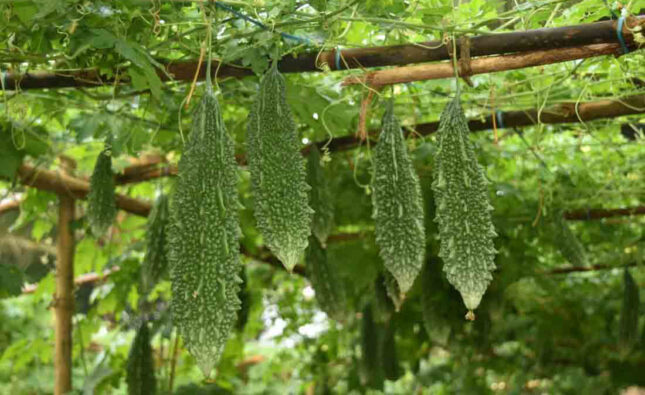Banana Farming Is an Important & Profitable Business in India
Banana farming is an important agricultural activity in India. It is one of the major fruit crops grown across the country due to its popularity and high demand in both domestic and international markets. Here are some key points about Banana Farming Is an Important & Profitable Business in India:
1. Banana Varieties:
India cultivates several banana varieties, including the popular Cavendish, Robusta, Grand Naine, Dwarf Cavendish, and Red Banana. The choice of variety depends on factors such as climate, market demand, and intended use.
2. Suitable Climate:
Banana plants thrive in tropical and subtropical climates. The southern and western parts of India, such as Kerala, Tamil Nadu, Karnataka, Maharashtra, Andhra Pradesh, and Gujarat, are major banana-growing regions due to their favorable climatic conditions.
3. Cultivation Practices:
Banana cultivation requires well-drained fertile soil, with a pH range of 6-7. Farmers often adopt practices like tissue culture propagation, suckers planting, and the use of organic manures and fertilizers to enhance productivity. Mulching and drip irrigation are also common practices to conserve water and control weed growth.
4. Pest and Disease Management:
Banana plants are susceptible to various pests and diseases, including nematodes, banana bunchy top virus (BBTV), Panama disease (Fusarium wilt), and Sigatoka leaf spot. Farmers employ integrated pest management (IPM) techniques and disease-resistant banana varieties to control these issues effectively.
5. Harvesting and Post-Harvest Management:
Bananas are harvested when the fruits have reached their desirable size and color. The bunches are carefully cut from the plants and packed in crates for transportation. Post-harvest management involves cleaning, sorting, and packing the bananas for local markets or export. Proper storage and transportation facilities are crucial to maintain fruit quality.
6. Market and Export:
India is one of the largest banana producers globally. The domestic market has a high demand for bananas, both for fresh consumption and processing into products like banana chips and banana puree. Additionally, India also exports bananas to countries like the United Arab Emirates, Saudi Arabia, Nepal, and the United Kingdom.
7. Government Initiatives:
The Government of India has implemented various schemes and programs to support banana farmers. These initiatives include financial assistance, subsidies for inputs, infrastructure development, and training programs to improve banana farming techniques.
Step-by-Step Banana Sales & Marketing Strategies
Banana marketing involves the promotion, distribution, and sale of bananas to consumers. It is essential to create awareness about the availability and quality of bananas, reach the target market effectively, and ensure an efficient supply chain to maximize sales. Here are some key aspects of banana marketing:
1. Market Research:
Conducting market research is crucial to understand consumer preferences, demand patterns, and market trends. It helps in identifying target markets, consumer segments, and potential competitors. Market research also provides insights into pricing strategies, packaging preferences, and promotional activities.
2. Branding and Packaging:
Creating a strong brand image and appealing packaging can significantly impact banana sales. Branding efforts may include developing a distinct logo, slogan, and visual identity that resonates with the target audience. Packaging should be attractive, informative, and designed to protect the bananas during transportation and storage.
3. Distribution Channels:
Establishing efficient distribution channels is vital for reaching the target market. Bananas can be sold through various channels, such as wholesale markets, supermarkets, grocery stores, fruit vendors, and online platforms. Developing partnerships with distributors and retailers can help ensure a consistent supply of bananas to meet consumer demand.
4. Promotional Strategies:
Promoting bananas through effective marketing strategies can help create awareness and drive sales. Some common promotional activities include advertising through print, television, radio, and digital media. Promotions can also include point-of-sale displays, product demonstrations, discounts, and partnerships with food retailers or restaurants.
5. Quality Assurance:
Maintaining consistent quality is crucial for customer satisfaction and repeat purchases. Implementing quality control measures throughout the supply chain, from cultivation to distribution, ensures that bananas meet the desired standards of appearance, taste, and freshness. Quality certifications can provide assurance to consumers and enhance the market value of bananas.
6. Export Market Development:
For countries with a surplus of bananas, exploring export opportunities can be beneficial. Exporting requires complying with international standards, such as phytosanitary regulations, quality certifications, and adhering to trade agreements. Building relationships with importers, participating in trade fairs, and market research specific to export destinations are essential for successful banana export marketing.
7. Consumer Education:
Educating consumers about the nutritional benefits, ripening techniques, and various uses of bananas can stimulate demand. Providing recipe ideas, health tips, and nutritional information through websites, social media, or product packaging can increase consumer engagement and promote banana consumption.
8. Market Adaptation:
Understanding regional preferences and adapting marketing strategies accordingly can be beneficial. For instance, in some markets, smaller-sized bananas or organic bananas might be in higher demand. Analyzing market feedback, and consumer behavior, and adapting to changing trends can help in staying competitive.
Successful banana marketing requires a comprehensive approach that considers various factors such as consumer preferences, market dynamics, distribution channels, branding, and quality assurance. Continuous evaluation and adaptation of marketing strategies are important to stay relevant and capture a significant market share.






